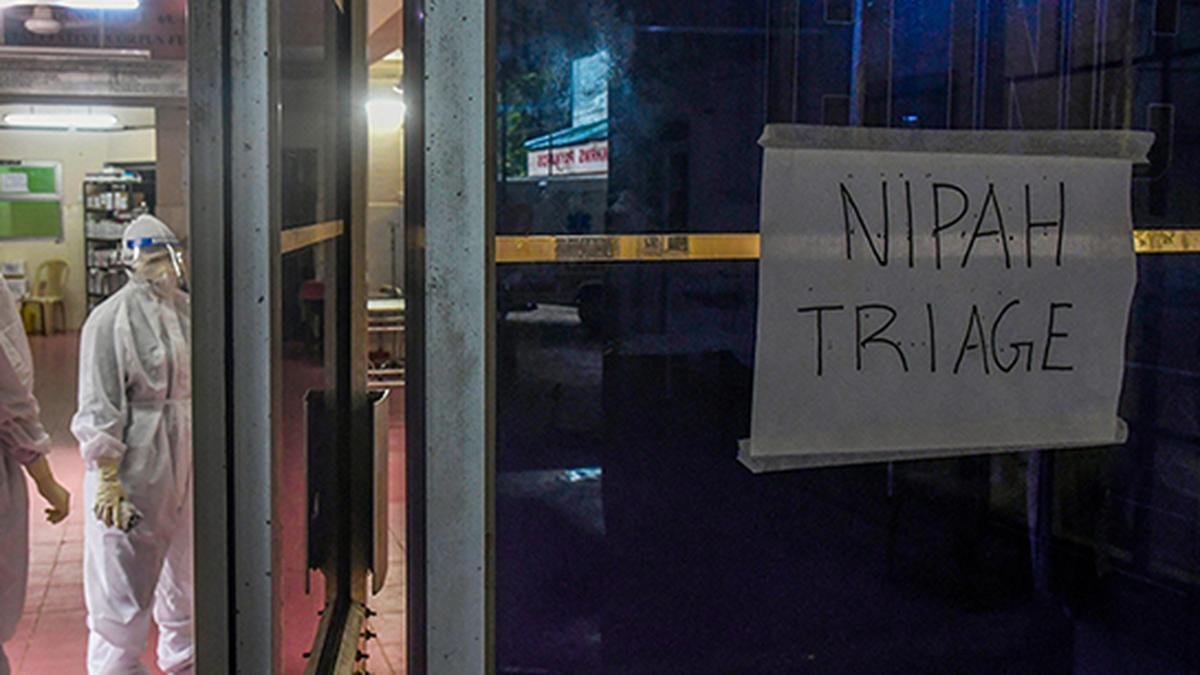The story so far: On September 14, a fresh Nipah scare erupted in Malappuram, the largest populated district of Kerala, when a 24-year-old man who died at MES Medical College Hospital, Perinthalmanna, on September 9 was found positive for the deadly virus. The health authorities in the State remained silent on that day as they waited for the final test results from the National Institute of Virology (NIV), Pune. But they were almost certain about the final results after the State virology laboratory at the Government Medical College, Kozhikode, flagged the test positive.
What followed the positive test?
The health department adopted the Nipah protocol by forming 16 committees as specified in the standard operating procedure for Nipah and started identifying the people who had come in close contact with the victim after he started showing symptoms about 10 days ago. On September 15, Kerala’s Minister for Health Veena George, based on the test result from NIV, Pune, declared that the man, who was a student in Bengaluru, had died of Nipah, a deadly zoonotic virus that causes a range of serious illnesses from respiratory infection to fatal encephalitis. With official confirmation, restrictions on social movement were imposed and face masks were made mandatory in public places in Malappuram district.

This is the second Nipah death in the Malappuram district in less than two months. On July 21, a 14-year-old boy from Chemrassery died of Nipah at the Government Medical College Hospital, Kozhikode. Although it had triggered alarm and government-imposed restrictions, the focus shifted when the neighbouring Wayanad district witnessed Kerala’s worst landslide on July 30. The Nipah cases of July 21 and September 9 were hardly 10 km apart in a highly populated district. While the schoolboy was presumed to have contracted the virus after he ate a hog plum, it is not clear how the Bengaluru student was infected.
What is the case history of Nipah in the State?
This was the sixth Nipah virus spillover in Kerala since 2018, when the State reported its first case. As many as 22 people in Kerala have died of Nipah so far. While the first outbreak claimed 17 lives in Kozhikode and Malappuram, the second incident at Pazhur in Kozhikode claimed only one life in 2021. Another outbreak that took place in Kozhikode in August 2023 claimed two lives. The latest Nipah incidents within two months in Malappuram have sent an ominous message that Nipah could be here to stay.

Why was there a delay to identify the virus?
The 24-year-old man had reached home from Bengaluru in the last week of August. He visited several clinics after he developed a fever and had difficulty walking on September 5. He was admitted to MES Medical College on September 8 with symptoms of meningitis or encephalitis, where he died on the morning of September 9. A doubt that arose in the doctor who examined the 24-year-old man at this private medical college led him to contact the District Medical Officer and send the body fluid sample for an examination to the Kozhikode virology lab.
How did the government respond?
The government, particularly the health department and the district administration, was quick to respond by declaring five civic wards in the adjoining grama panchayats of Tiruvali and Mampad as containment zones. Schools, madrasas, coaching and tuition centres, and anganwadis in the region were closed. Cinema halls too were shut. Shops were allowed to open from 10 a.m. to 7 p.m. only. Social gatherings were banned. Masks were made mandatory in the district, especially for students and teachers on campuses. The health department prepared a route map of the Nipah victim, traced 267 persons who had come in contact with him, and put them in quarantine. Several of them, particularly his parents, close friends and the doctors and nurses who took care of him at the hospital, were closely monitored. Their serum was collected and tested at the virology lab. So far all results have been negative. As many as 30 of the victim’s classmates in Bengaluru too were advised to self-quarantine.

The government also opened a Nipah control room at Malappuram and started closely monitoring the developments. Senior health officers led by health department director K.J. Reena have been camping at Malappuram. Health workers in 66 teams have undertaken a field survey within a three kilometre radius from the victim’s house in Tiruvali panchayat and reached out to 7,953 houses within four days. As many as 175 cases of fever were reported during the survey, and they were put under surveillance. The health department also reached out to nearly 300 persons with psychological support.
Kerala Health Minister Veena George on Nipah virus
Kerala Health Minister Veena George said on Tuesday (September 17, 2024) that 13 people who came into contact with a 24-year-old man who died from Nipah virus in Malappuram district last week have tested negative for the disease.
| Video Credit:
The Hindu
Where did Nipah come from?
Bats are considered to be the carriers of the Nipah virus. The primary pathways of transmission from bats to people are through contamination of fruits eaten by bats with subsequent consumption by humans. The virus can also be transmitted through contaminated food or directly from human-to-human through close contact with people’s secretions and excretions. Healthcare workers, friends and family members of an infected person are at high risk of contracting the virus.
It is unclear where the 24-year-old Nipah victim contracted the virus. Experts have been divided on attributing the virus exclusively to bats. Following the outbreak of 2018, there was a drive to destroy bat colonies, but in vain. The definitive connection between Nipah and bats is yet to be ascertained in Kerala.
Published – September 22, 2024 02:58 am IST







